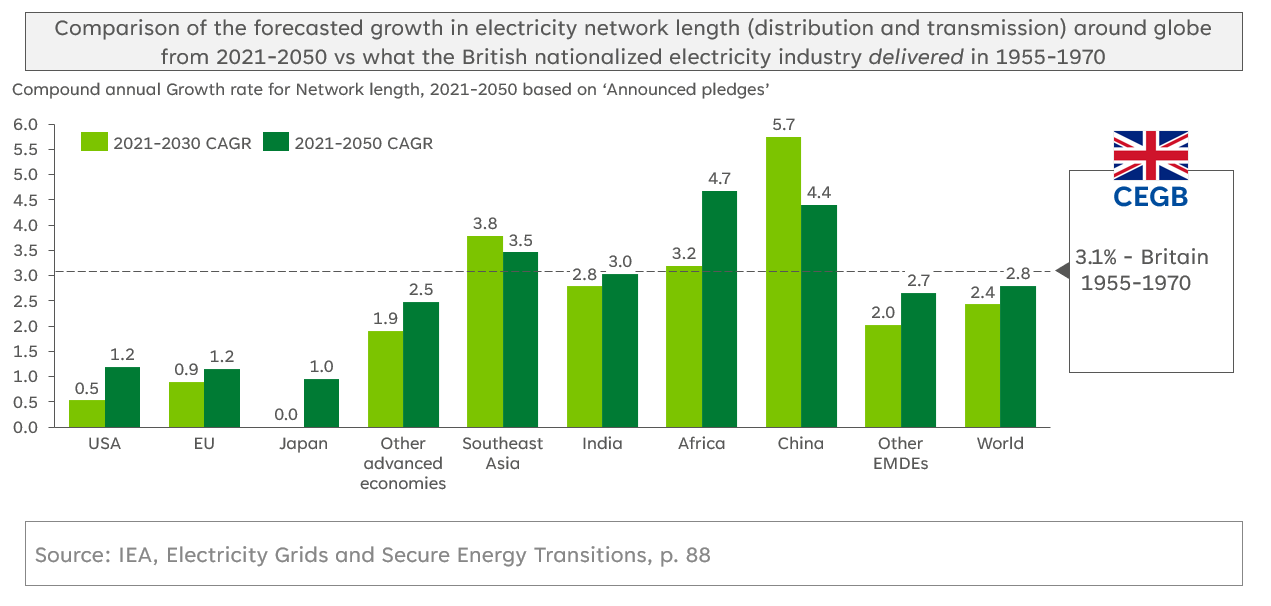The electricity network builders world cup: Britain 1950-1970 vs World 2020-2050
In a previous post I explored how much CAPEX the nationalised electricity industry spent on network building from 1948-1990 vs the levels of investment since 1990, and the levels projected out to 2050 to reach net zero.
There were three conclusions:
Britain will need to spend far more on electricity networks between 2020-2050 than at any point since 1990.
The last time Britain did something remotely like this was 1950-1970.
The network build of 1950-1970 had tremendous bang for buck; every pound bought a lot of additional network length, especially at the high voltage transmission levels.
In this post I want to put the scale and pace of the 1950-1970 build in a global context.
The IEA’s recent publication ‘Electricity Grids and Secure Energy Transitions’ is a landmark study. Helpfully, the report estimates the growth of the length of network (across distribution and transmission) for all regions based on announced pledges.
The graphs below compare the network growth rate for Britain 1955-1970 to what is projected for the rest of the world 2021-2050.
Across all voltages Britain’s first ‘Great Grid Upgrade’ was impressive. Only China, South East Asia and Africa are projected to grow networks at a higher rate.
If we focus in on just the high voltage transmission system, the achievements of the CEGB from 1955-1970 look even more remarkable. Britain grew its high voltage transmission network (>132kv) at 6.6% CAGR from 1955-70. There is no region that meets that level in the IEA’s projections from 2020-2050.





